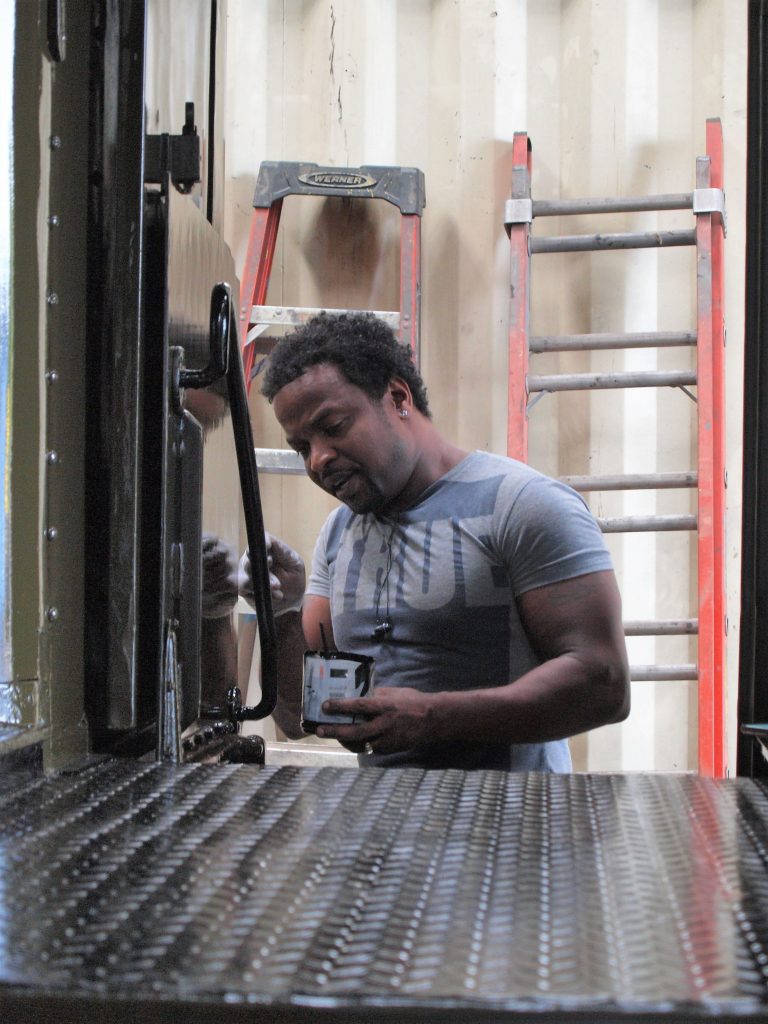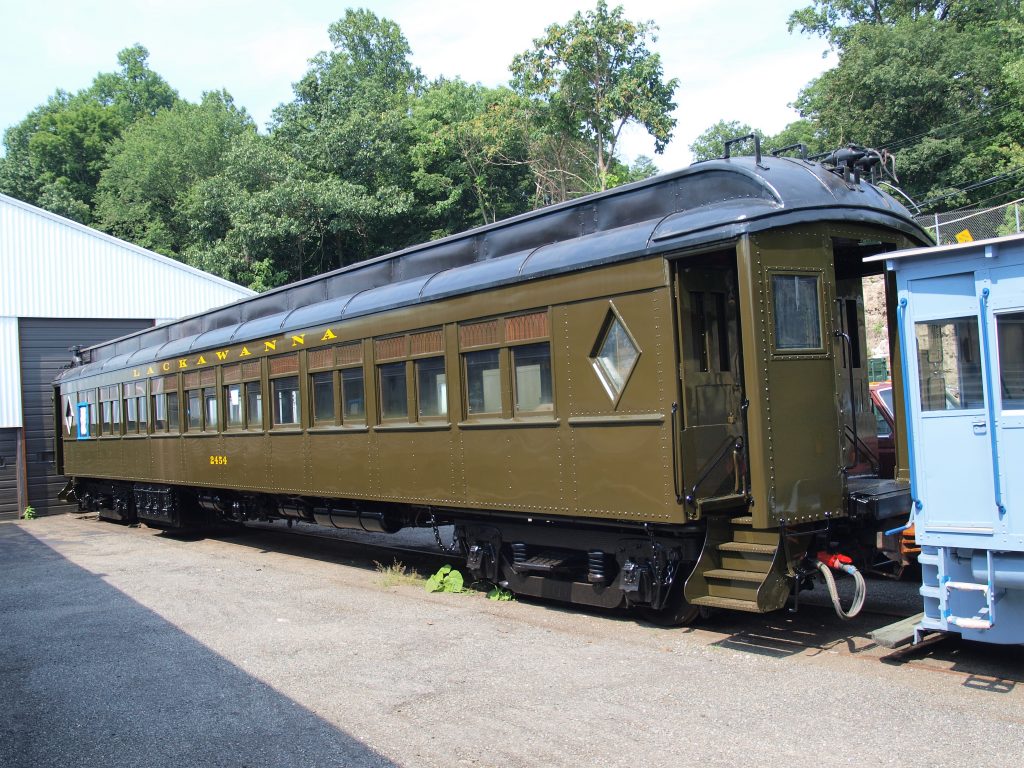The full restoration of this notable rail car was a long-term project. For the exterior of the car the Whippany Railway Museum utilized the services of Star Trak, Inc., located at the URHS restoration facility in Boonton, NJ. The first task was to remove all the earlier paint layers and coat the carbody and roof in primer paint. The lower, rotted portions of steel along the bottom and ends of the car were cut out and refitted with new metal work. Repairs were made to a minor leak in a portion of the copper-clad roof. The decayed steps and vestibule platforms were removed and rebuilt. Museum volunteers also cleaned the car’s underbody components.
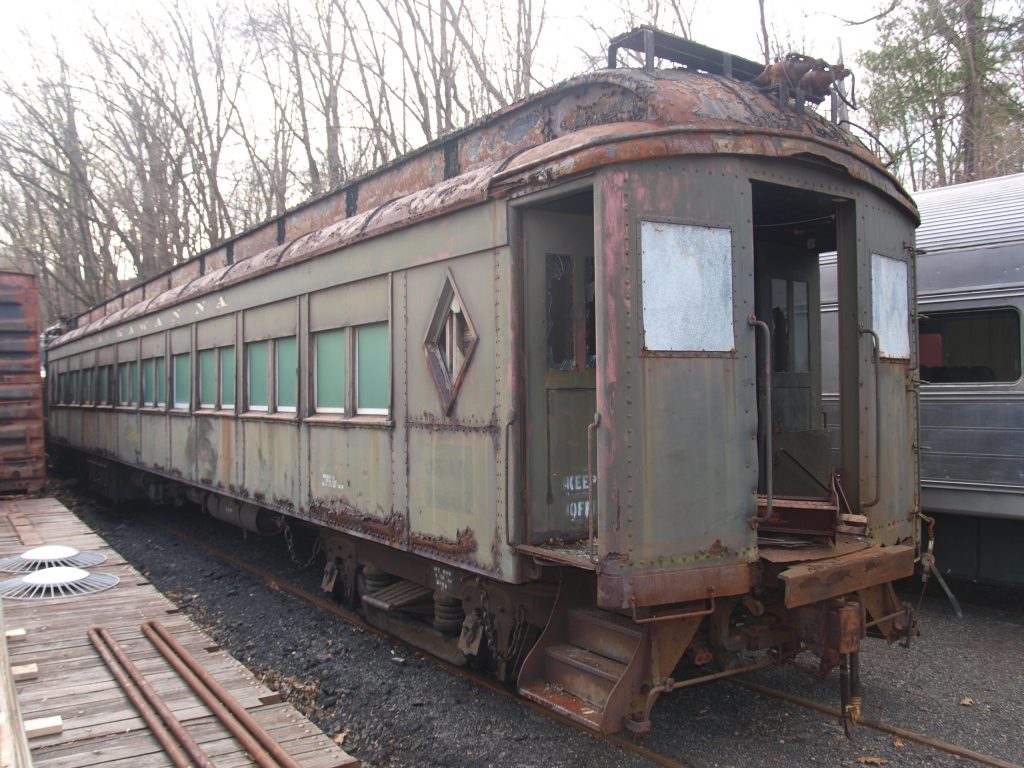
Photo: Steve Hepler
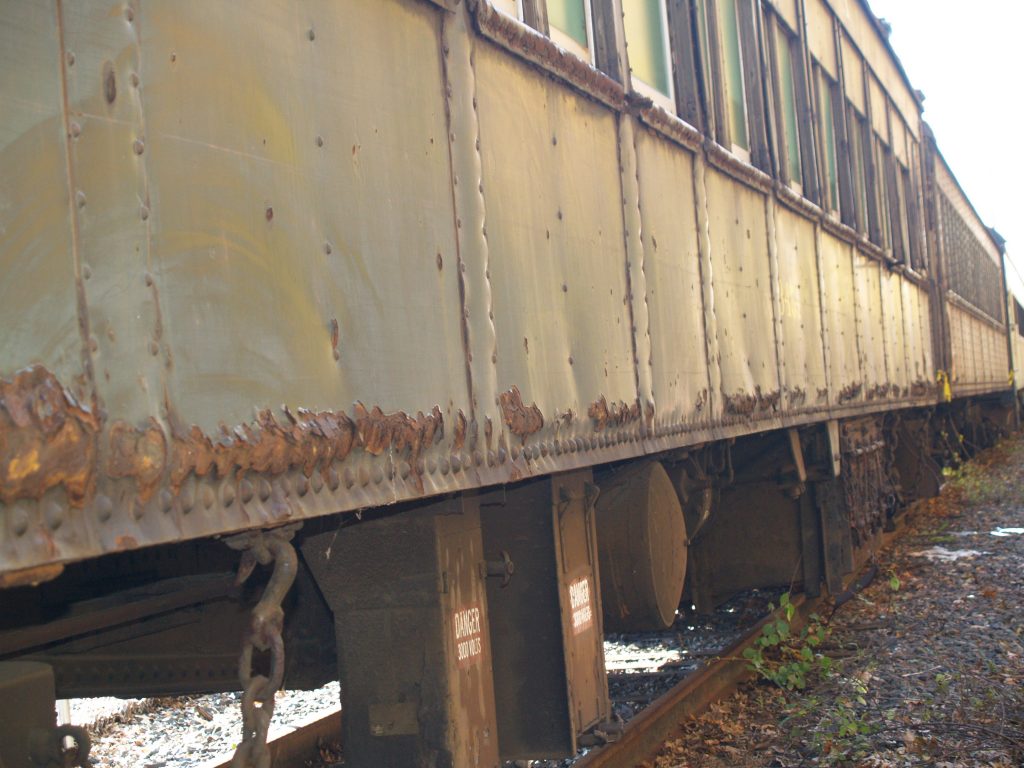
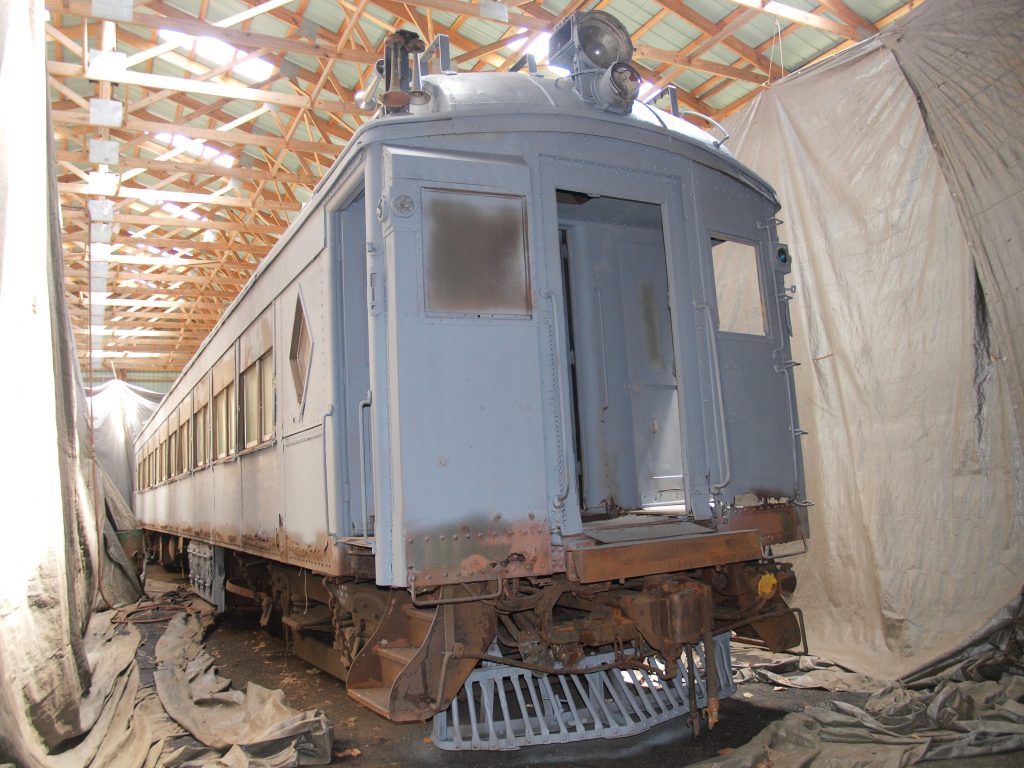
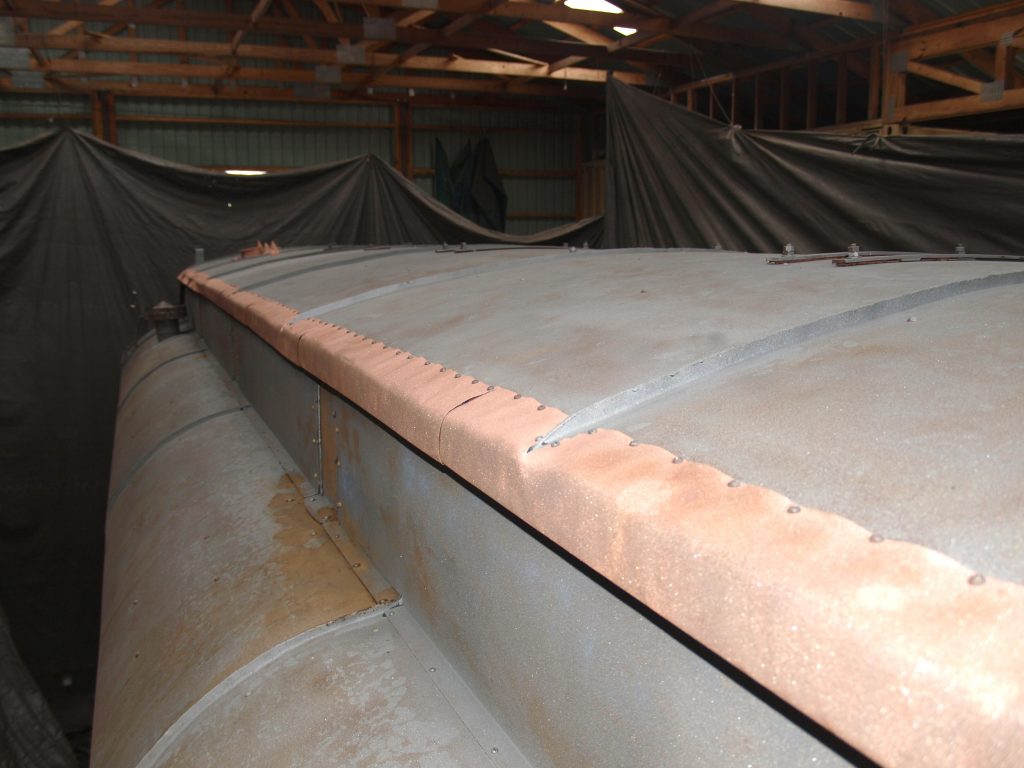
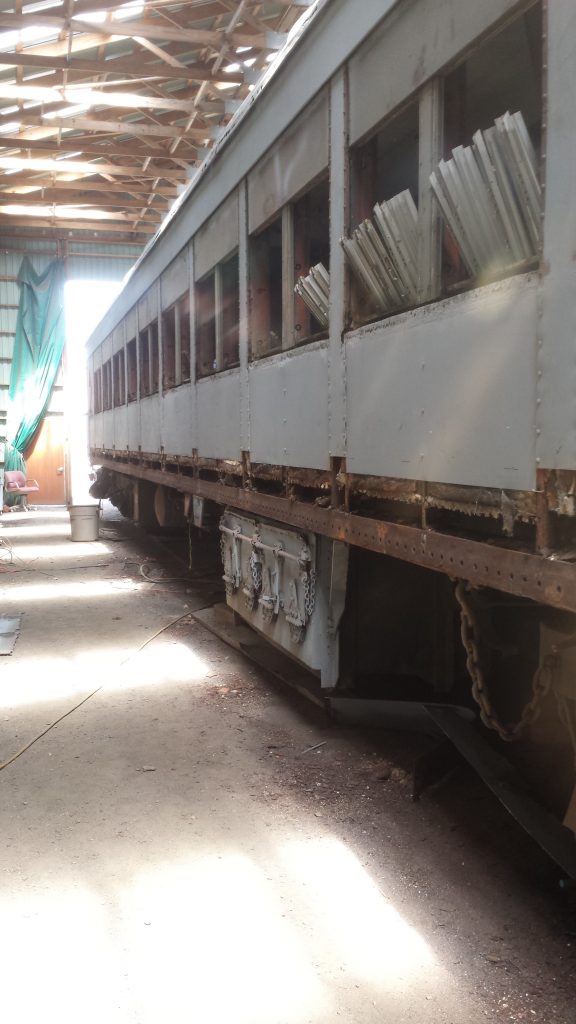
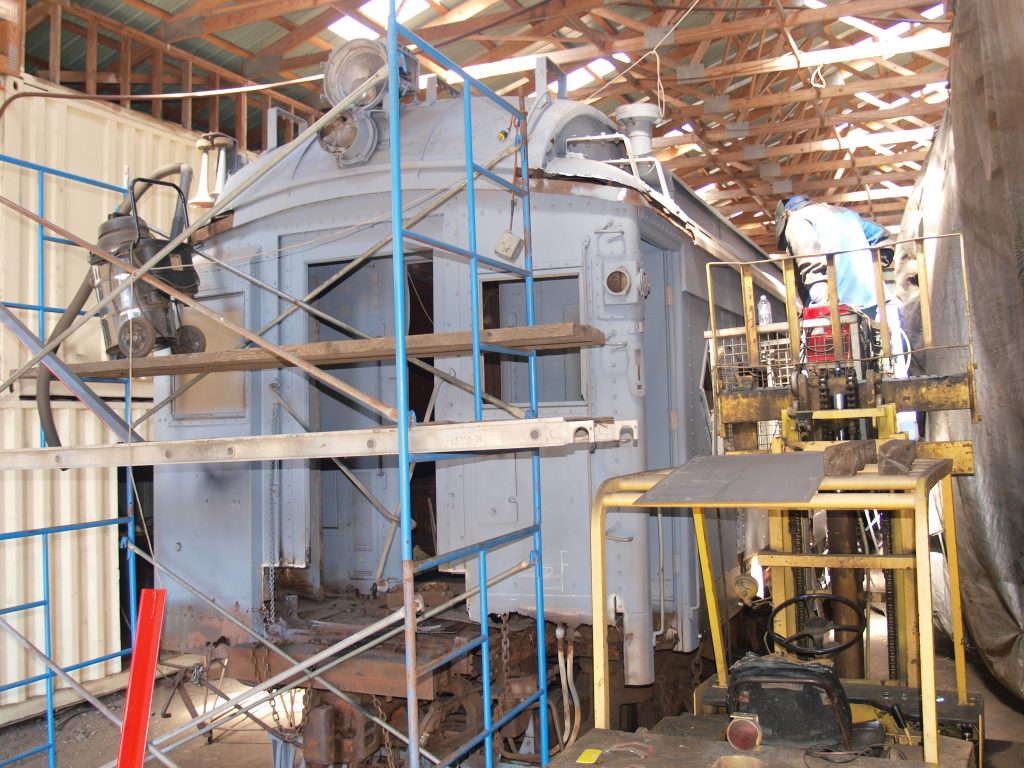
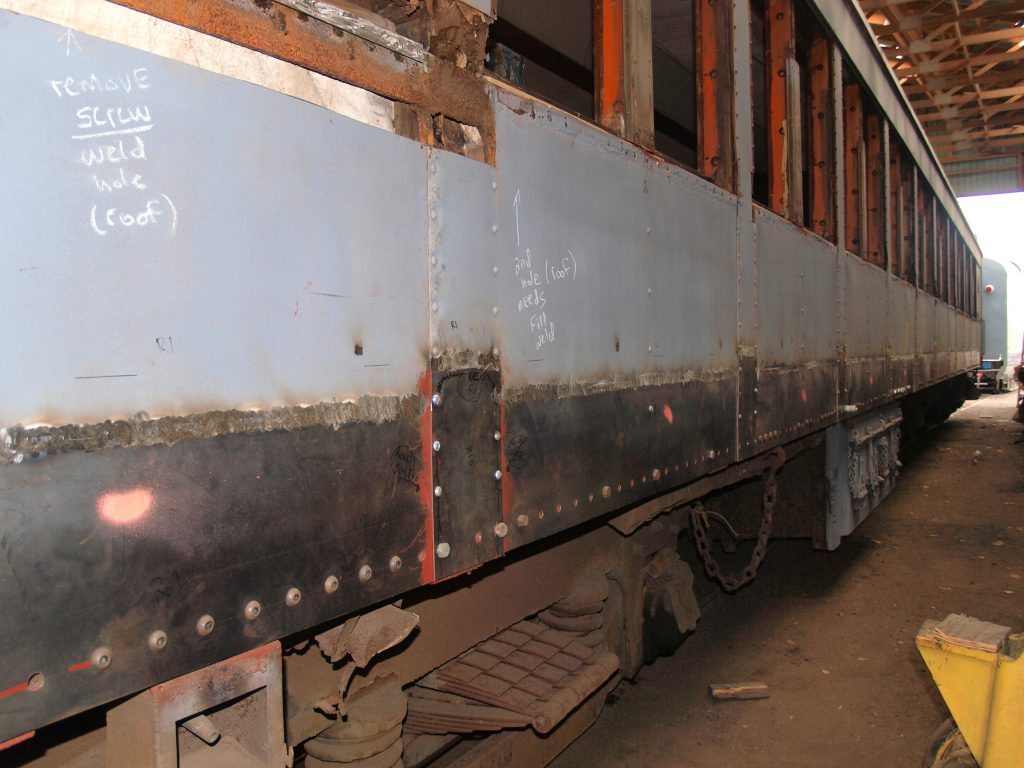
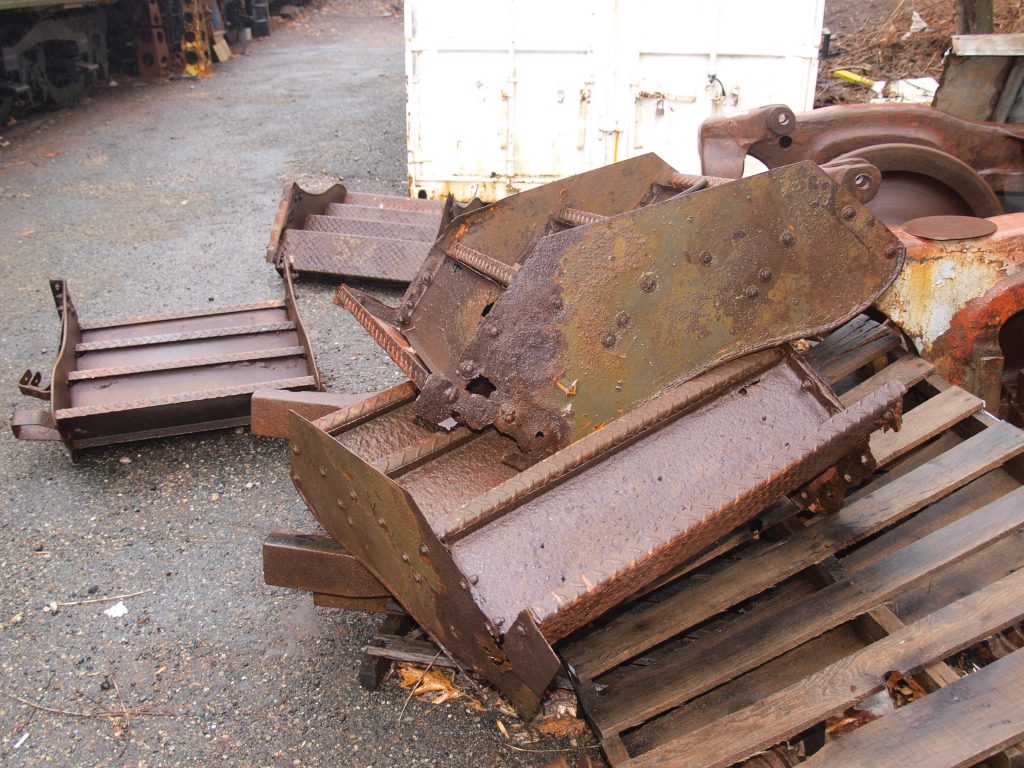
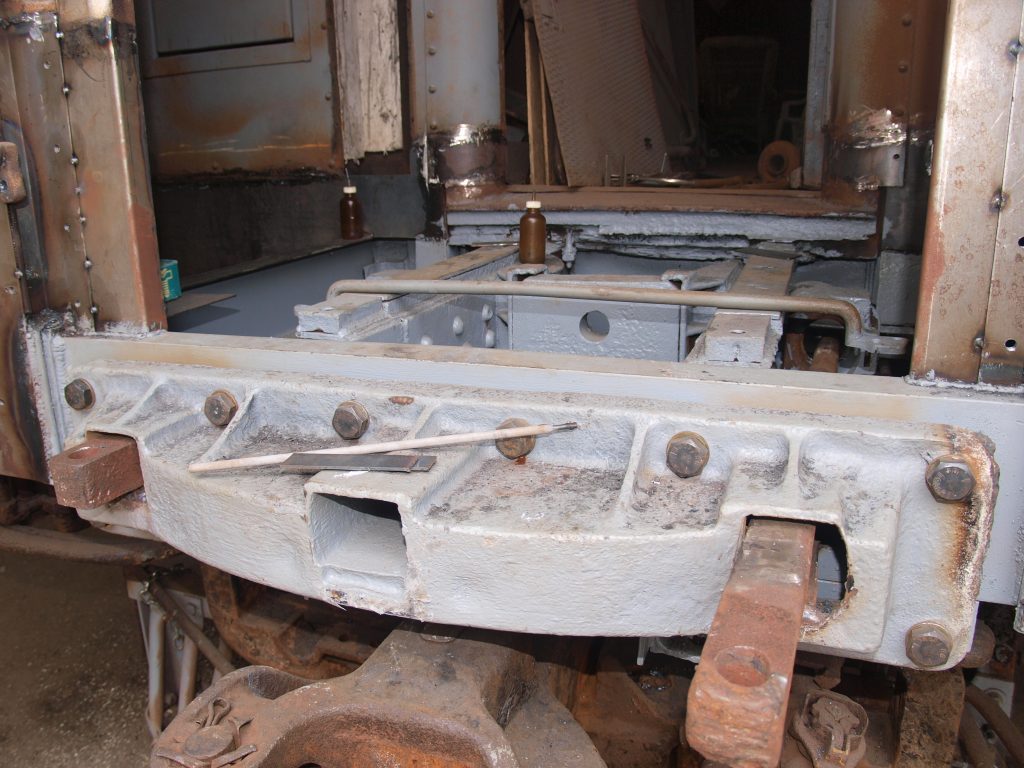
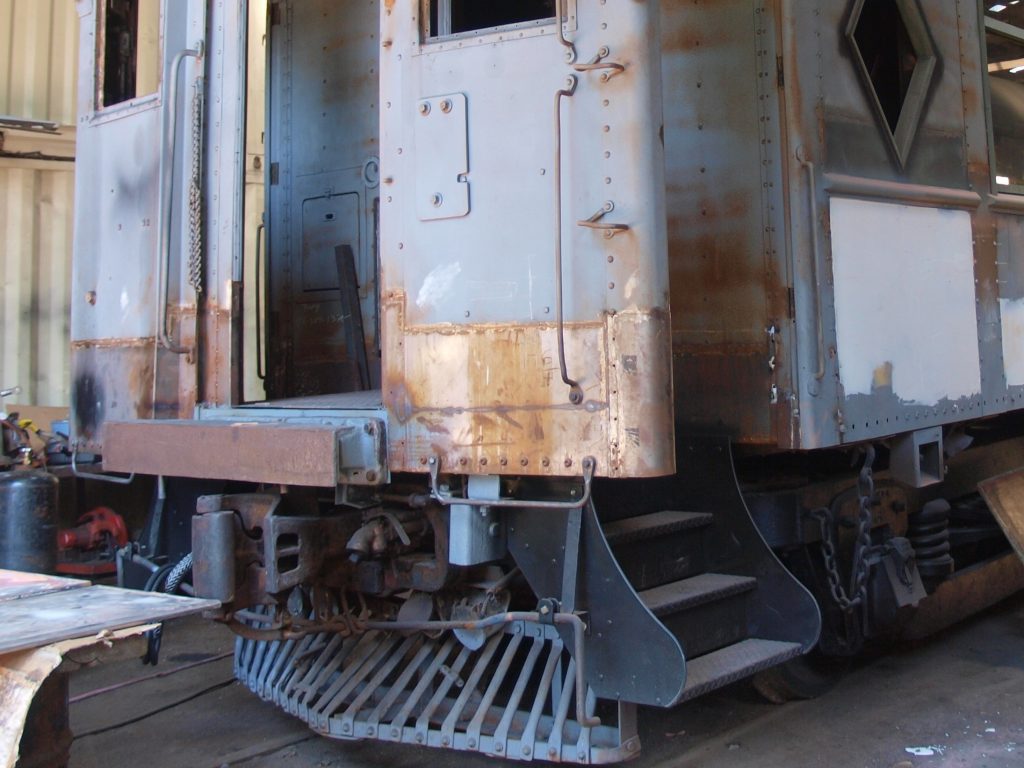
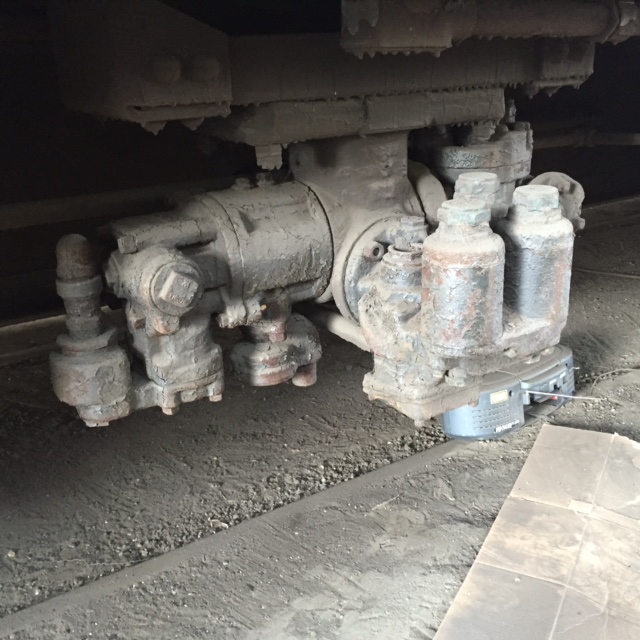
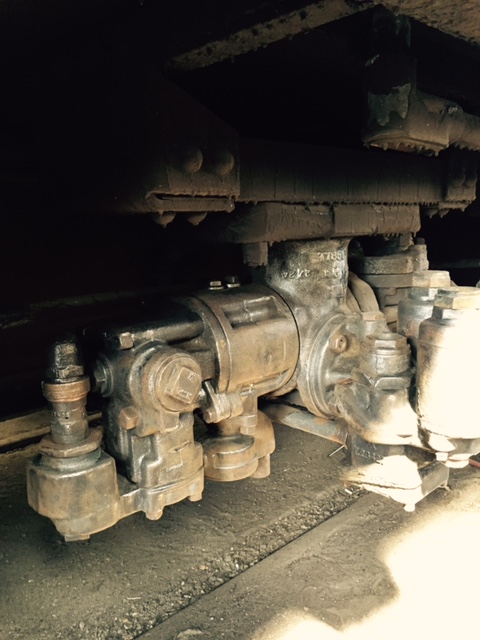
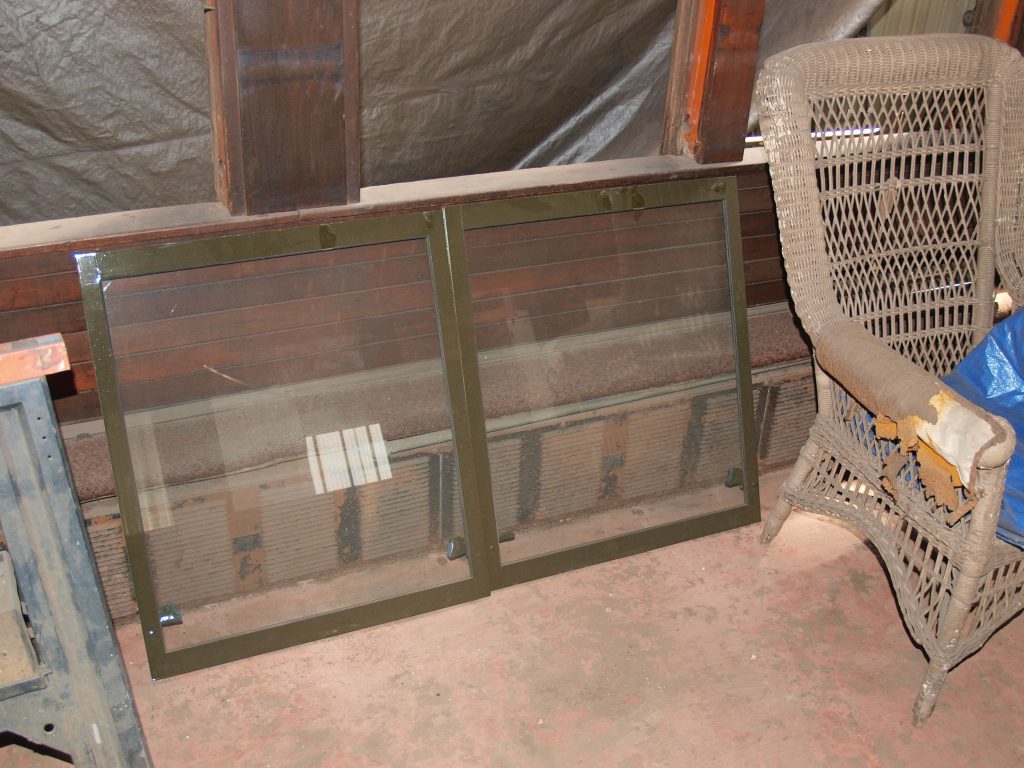
While the body repairs were underway, Museum volunteers removed all window frames, refurbishing them and fitting them with new glazing. A notable feature of No. 2454’s original 1912 construction is the stained-glass window panels above each large passenger window. Some time after the 1930 rebuild of the car for electric MU service, the stained-glass windows were plated over to give the car a more “modern” appearance. Museum volunteers removed this plating and found that the original 1912-era wood framing and stained glass panels were still in place and intact. The wooden frames for the stained-glass unfortunately did not age well and were all removed and totally re-fabricated.
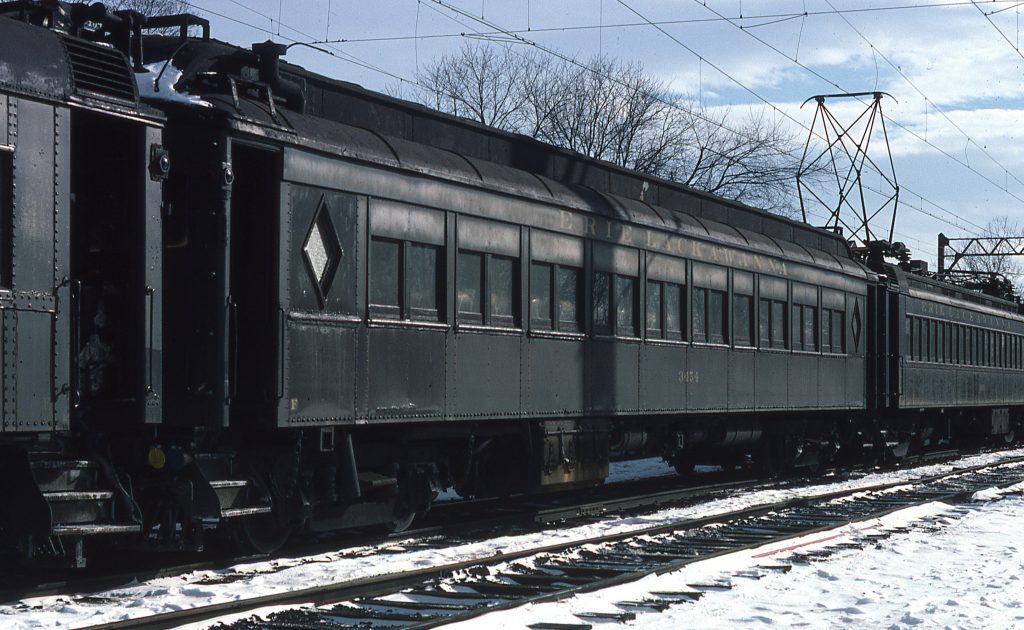

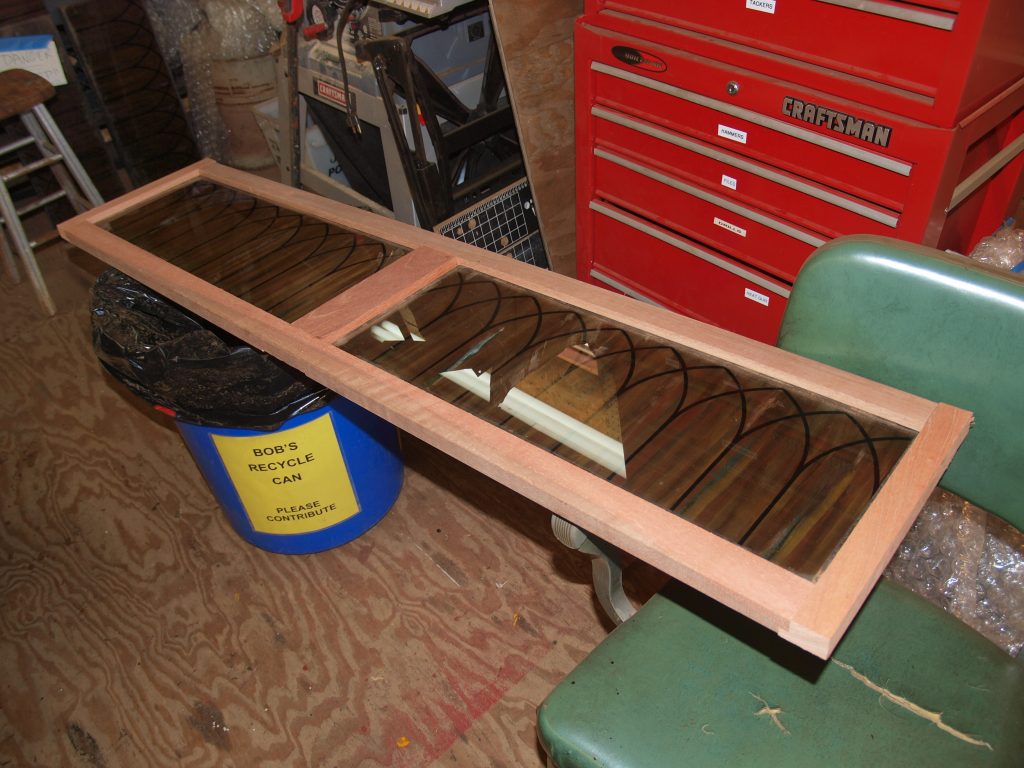

Also unique to the Subscription Cars were their diamond shaped windows. Several of them had been vandalized and their frames had deteriorated. Museum volunteers removed the original frames and fabricated replacement ones. New glass matching the original was cut to replace those panes which had been destroyed. Museum volunteers then reinstalled these signature windows. Finally, the interior framing around the windows was rebuilt and installed.
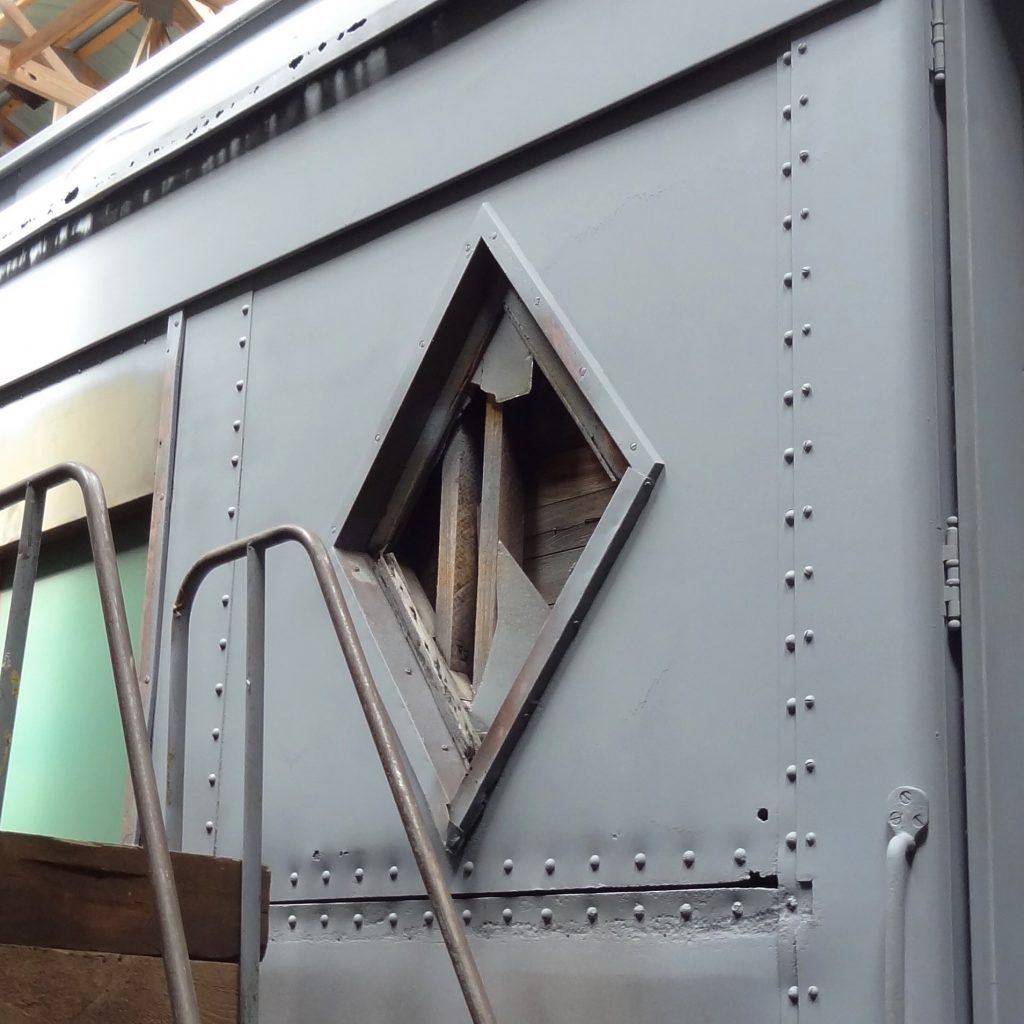
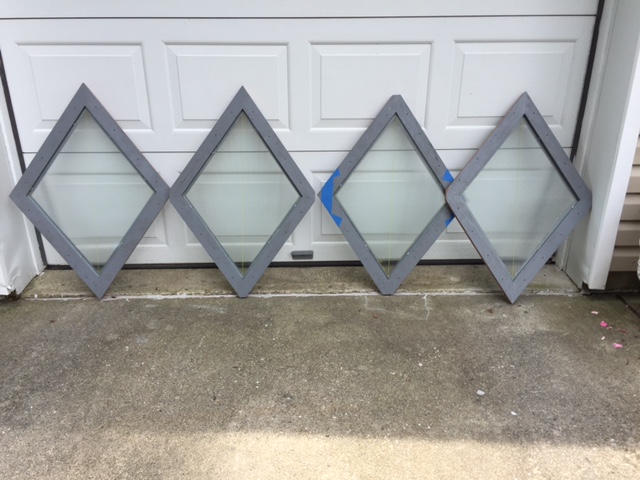

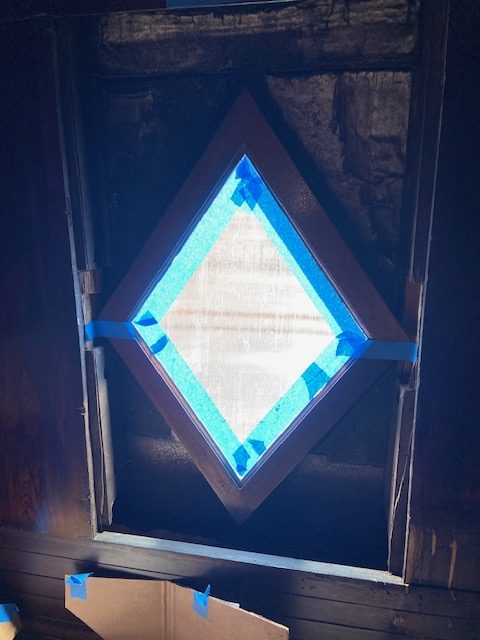
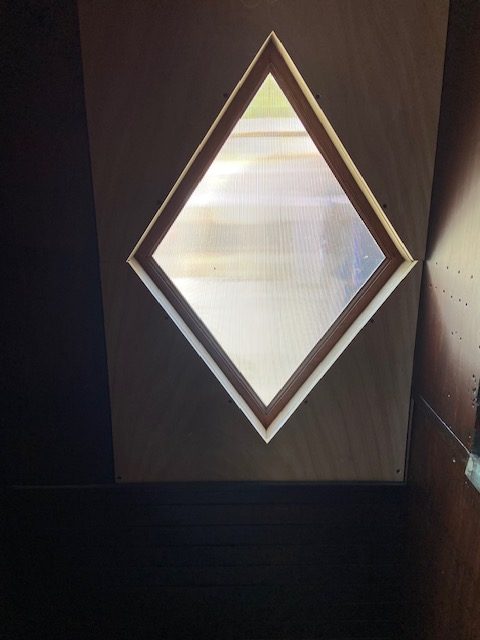
With the repairs to the rotted sections of the sides and vestibules completed, the new steps installed and the windows reinstalled the next task was to fully repaint the exterior of the car. The standard color scheme for Lackawanna MU equipment was dark green (Pullman green) sides and ends with a black roof and black underbody. The lettering and car number were yellow.
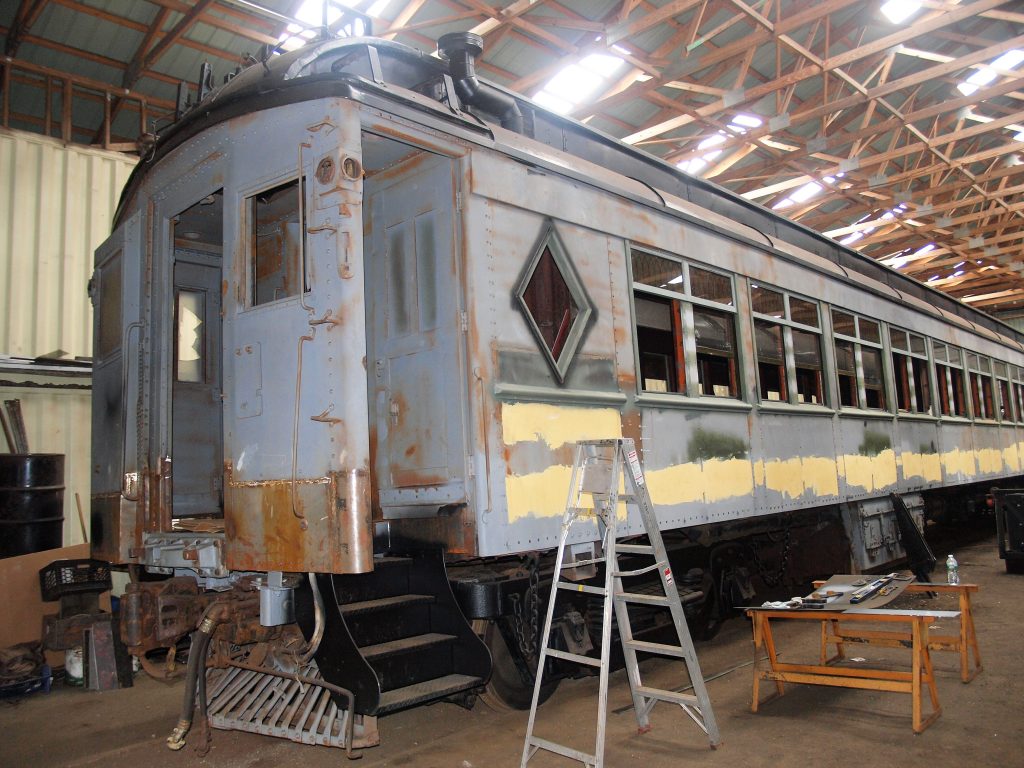

In repainting the Subscription Car, first the roof was painted black. Next, all the window glass was masked. The car’s “letterboards”, the areas on the car sides above the windows, were then painted yellow, as were small areas on each side centered under the windows. Stencils for the lettering (LACKAWANNA) and the car number (2454) were then affixed in the yellow-painted areas.
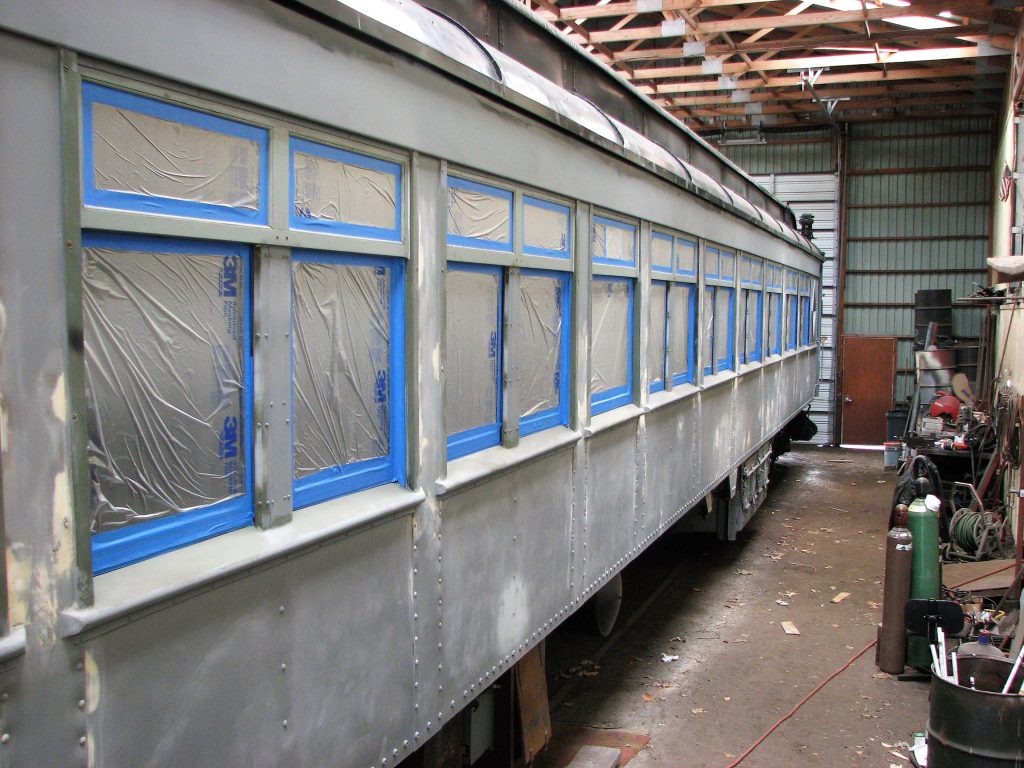
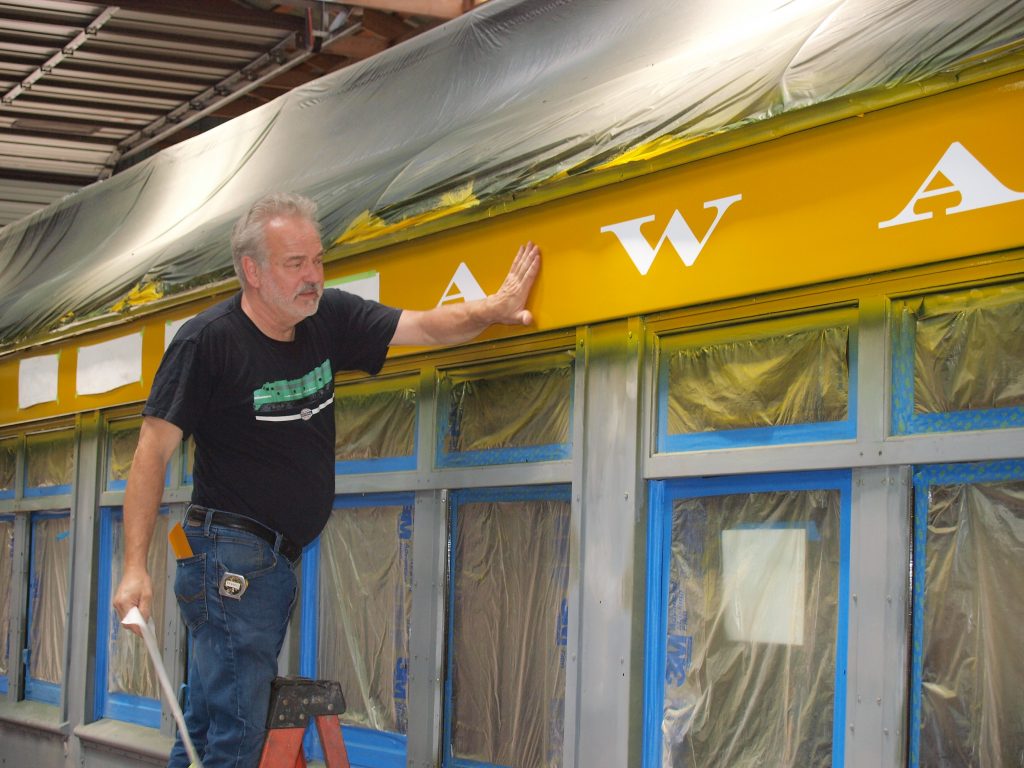
With the preparation work finished the car body was ready to be painted. The first step was the application of a primer coat, which when dry was then lightly scuffed. After wiping down the car, two coats of green paint were applied. Once dry, the stencils were removed, revealing the lettering and number.
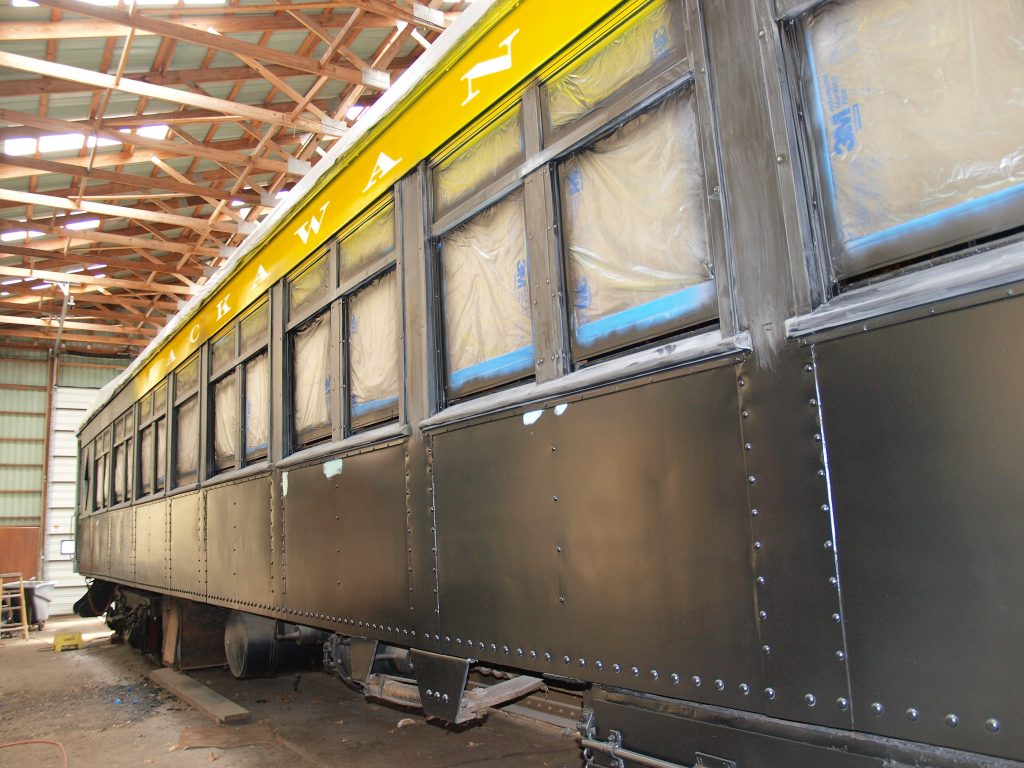
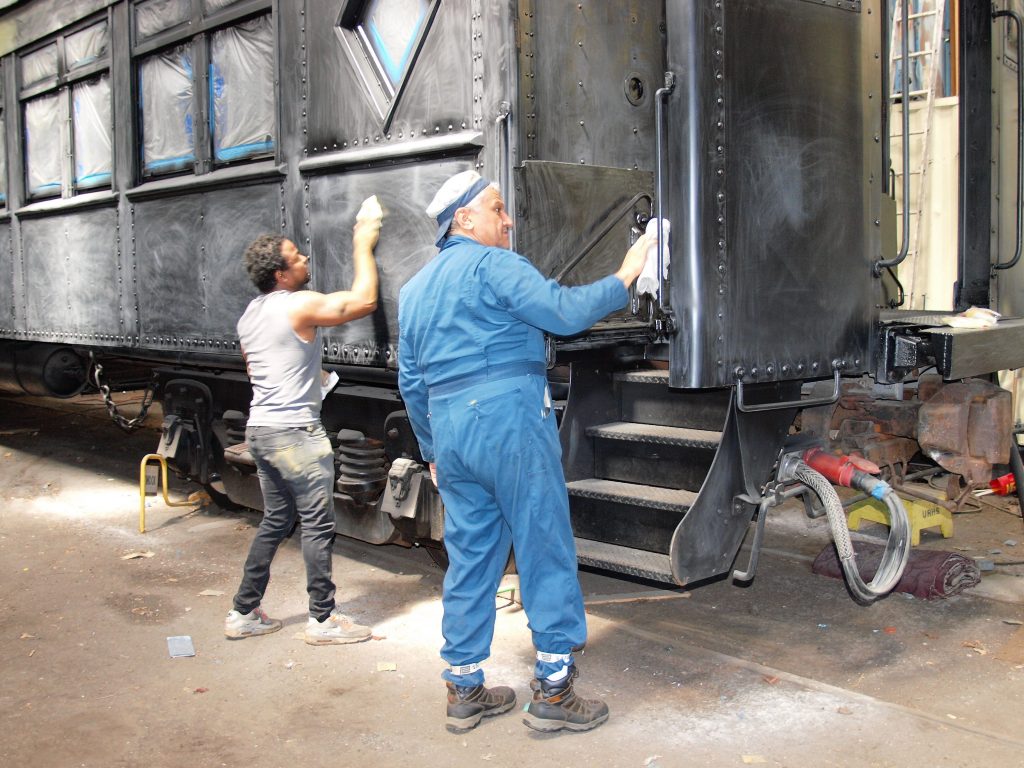
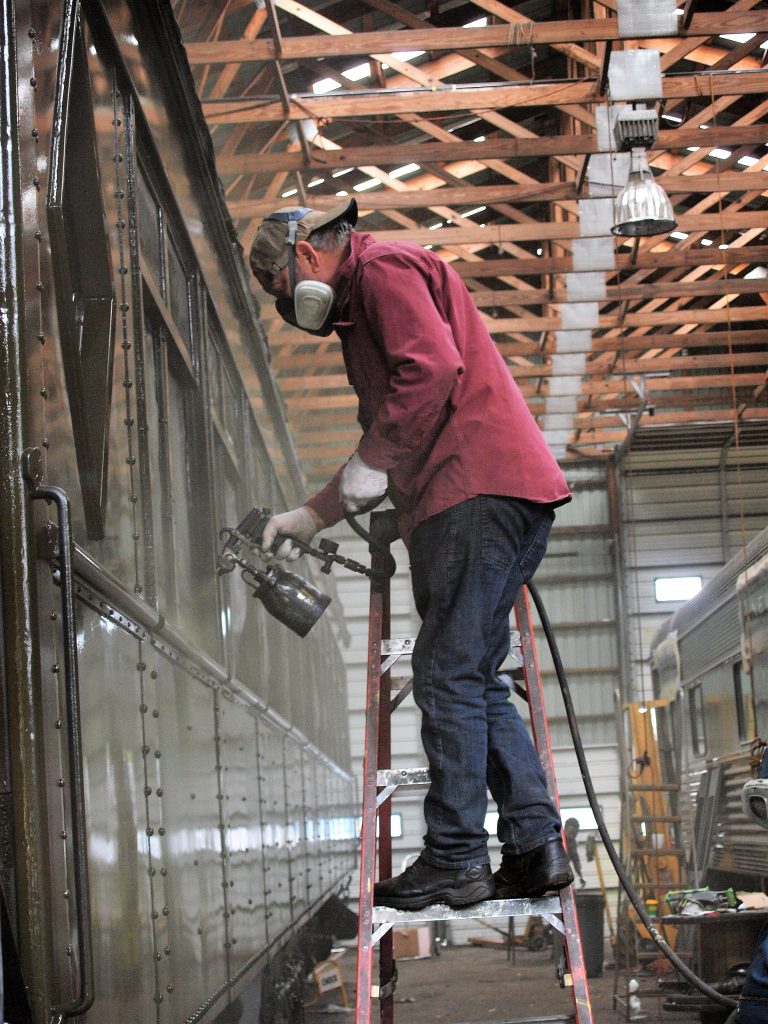
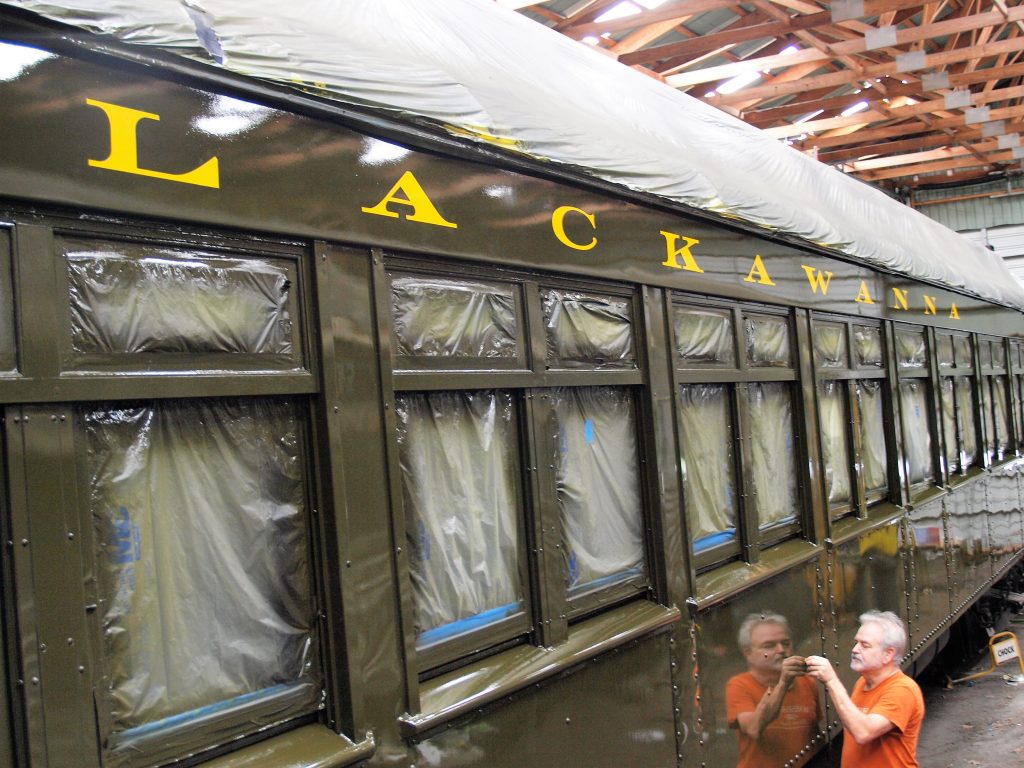
Following the completion of several detailing tasks, the exterior of the car looked as it had at the start of electrified service on the Lackawanna in 1930.
